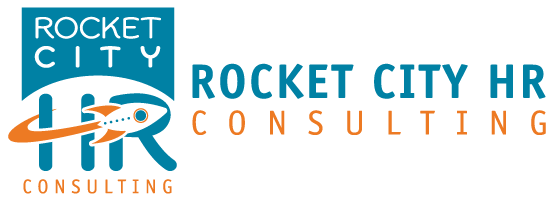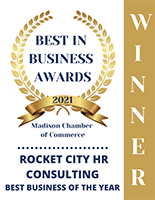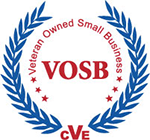According to Forbes Online, every business goes through four phases of a life cycle: startup, growth, maturity, and renewal or decline. Knowing what business phase you are in can make a huge difference in right-sizing your HR operations.
- All businesses begin in the STARTUP phase
- The next phase is marked by tremendous GROWTH
- After that comes MATURITY
- Finally, RENEWAL or DECLINE
Some businesses will go through some of the phases more than once.
Let’s look at these one by one and see what is happening within the business and what HR’s response should be.
STARTUP PHASEDuring the startup phase, you spend your time meeting people, coming up with new ways to sell your products or services, and consistently implementing new ideas. This period is marked by much trial and error. At this point, you won’t have many set processes, and you should be tweaking your business model to get a sense of the market and how to turn a profit. Your employees wear many hats. Few job descriptions and titles should exist because it is an all-hands-on-deck situation.
Startup – HR Needs- During this phase, some cautious hiring may occur. Revenue isn’t very steady, so part-time jobs might be ideal.
- HR compliance needs:
- Fundamentals such as whether an entity can work as a 1099 for your business. In a lot of cases, the IRS, the Department of Labor, and the State will weigh in on whether they should be a W2 employee versus a 1099 Independent Contractor.
- Most states, including Alabama, have an E-Verify requirement. This is where you take the new hire’s identification, compare it to their I-9 form, and within 3 business days of hire you must E-Verify the employee. The DHS and Social Security databases are screened to ensure the employee has the right to work in the U.S.
- Most states, including Alabama, also have a New Hire Reporting requirement. Once you hire a new employee, the state must be notified so they can discontinue unemployment payments if the employee has been receiving them.
- If you have just one employee, there are at least five labor law posters that are required to be posted in the state of Alabama.
- Now is the time to make sure you have a valid system for setting up paper and electronic personnel files for your employees. Do you have copies of applications, resumes, offer letters, new hire checklists, etc.?
- Note: E-Verify documents don’t belong in the personnel files; they should be kept separate.
- Once you have paid out $1,500 in wages, you’ll need to set up your unemployment account with the state.
- Payroll comes into play with just a single employee. You’ll need to figure out if your employees are going to be hourly or if they can be paid on a salary basis. Be sure to check out the Department of Labor’s rules on Exempt or salaried employees.
- If you do have hourly employees, you need to track their time.
- This may be a time when your organization struggles with cash flow and “making payroll”.
GROWTH PHASE
The next phase is growth; it is one of the most exciting and demanding phases.
The biggest challenge for companies in the growth phase is dealing with the constant range of issues that require more time and money. Learn how to train and delegate to conquer this stage of development. You will need to hire more employees to keep up with customer demand.
Growth – HR Needs- HR compliance needs:
- Evaluate at each stage of growth; it changes!
- If you’ve hired more employees, your required state and federal labor law poster list may have grown.
- If you have 20+ employees (part-time or full-time), COBRA notice requirements kick in if you offer health and other benefits.
- At this point, you’ll be figuring out which compensation and benefits are needed to attract and retain talent.
- Recruiting will be on fire – you might want to look into an Applicant Tracking System.
- This is when you will start building your employee brand/company culture.
- Training and development processes will start to emerge.
MATURITY PHASE
During the Maturity Phase, your company should now be seeing stable profits year-over-year. You should feel more secure than you have at any other point since you started. Professional management should be running the day-to-day business.
Your staffing levels should have evened out with just normal attrition most of the time. Now is the time to focus on improvement and productivity. To maintain an operational competitive advantage in an established market, you will require better business practices along with automation and outsourcing to improve productivity.
Once the rapid growth phase is over, businesses get into a comfortable rhythm with relative stability during the maturity phase. This can be the longest phase.
Maturity – HR Needs- HR compliance needs:
- Depending on the size of the organization, you may have EEO and OSHA annual reporting requirements:
- EEO reporting is required for businesses with 100+ employees (or 50+ for government contractors). This year no deadline for the reports has been set.
- OSHA requires employers to maintain records of work-related injuries and illnesses using OSHA Forms and to post an annual summary (Form 300A) by February 1st – April 30th of the following year, with electronic submission requirements for businesses w/ 100+ ee’s or in high-risk industries.
- Some low-risk businesses and those with fewer than 10 employees may be exempt from OSHA record-keeping requirements.
- Depending on the size of the organization, you may have EEO and OSHA annual reporting requirements:
At this point, most organizations have an HR Department or Manager who can:
- Formalize written job descriptions and policies (employee handbooks)
- Hire, outsource, or train staff in HR management
- Invest in HRIS or other systems to track personnel
- Develop electronic onboarding and offboarding (COBRA Notices/Benefits)
- This is the time most businesses lock in a stable compensation and benefits model.
- Talent Management is more formal and includes recruitment and training plans, performance management, annual benefit reviews, career ladders or lattices, and recurring recognition and retention programs which may include bonuses.
- Think about succession planning to be ready for the next phase of the business life cycle.
- This may be the opportunity for your business to cash in on all the years of hard work to sell the business or transition leadership.
RENEWAL OR DECLINE PHASE
Eventually, your business may face renewal or decline. This may also be the time to take action and start looking for ways to innovate and push toward a renewal of the business.
If owners are focused on what they can take out of the business before they retire and aren’t willing to invest in new technology, people, or marketing, it’s a sign that they’re in decline. If revenue has declined for three consecutive quarters, you probably entered the declining phase two years ago. It can mean shutting down the business.
At this point, you may be looking to sell the business, acquire other business(es), or transition the business to new shareholders. Get a proper valuation of your company. Look at your business operations, management, and competitive barriers to make the company worth more to the buyer. And, set up a business transition plan.
Renewal or Decline – HR NeedsWhether the organization is going through a renewal and relaunch phase or is headed to sale or closure, communication is key.
- Ensure that HR is Preparing for Personnel Transitions:
- Planning for Succession or Sale
- Identify New Leadership
- Support HR needs during Merger and Acquisition activities (often a great deal of reporting involved)
- Reductions In Force
- Layoffs
- WARN (Workplace Adjustment and Retraining Notification) Act and State Variants: Companies with more than 100 employees who are laying off 50+ employees at a single site need to provide 60 days’ notice
- COBRA Benefits Continuation
- Planning for Succession or Sale
In which business phase is your organization right now? Do you have appropriate HR support for this phase? If not, reach out and let our HR experts make HR look easy!







